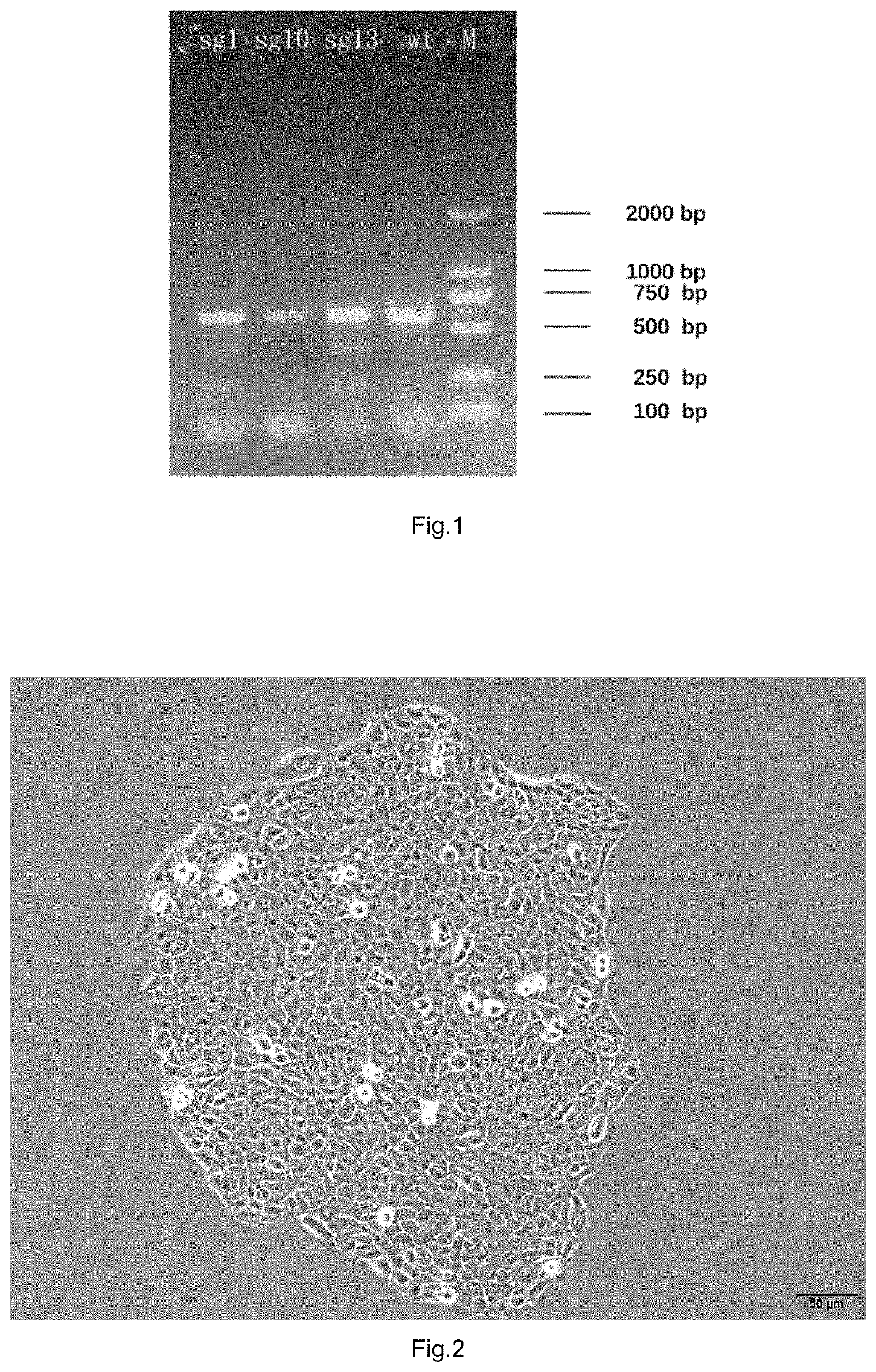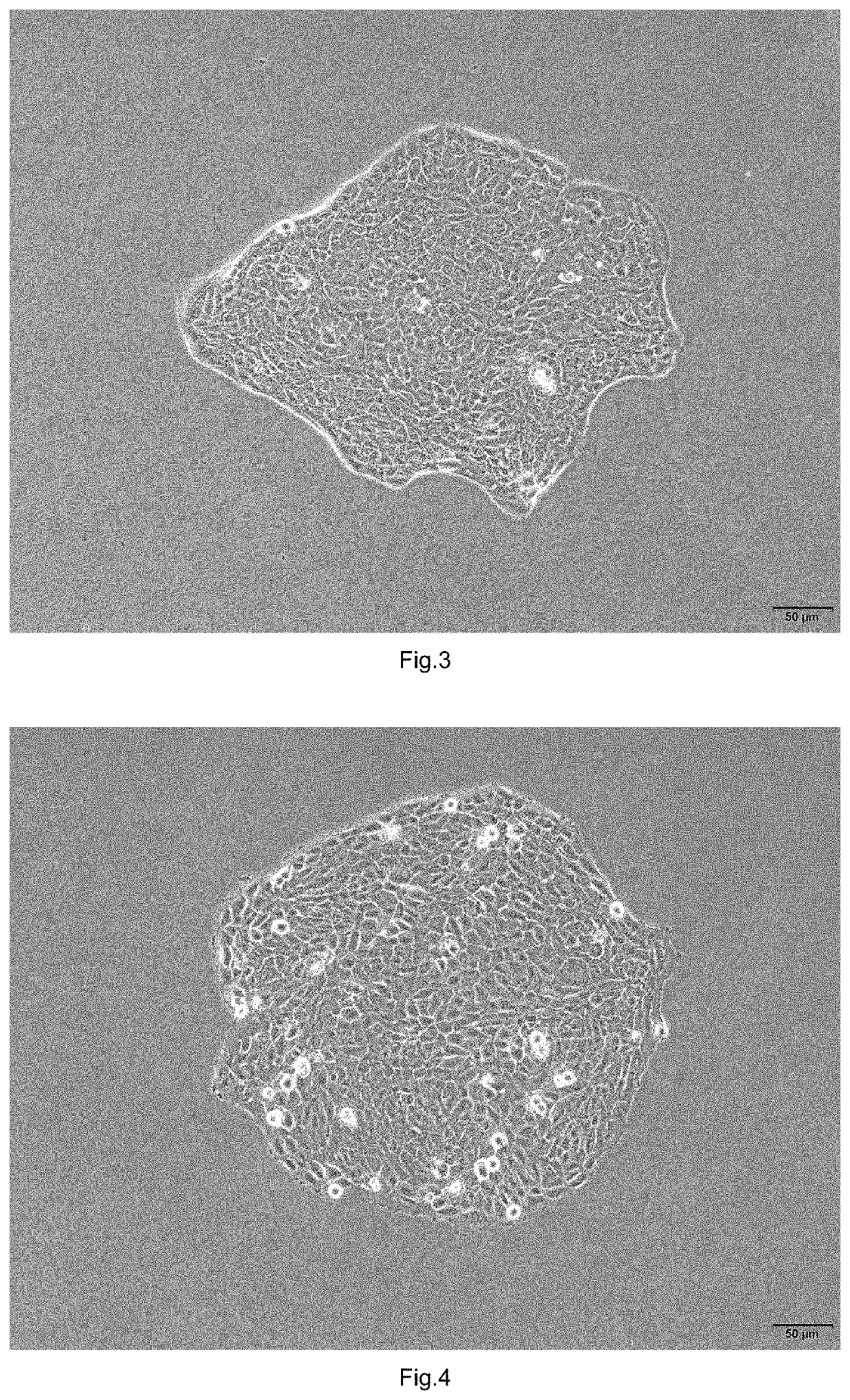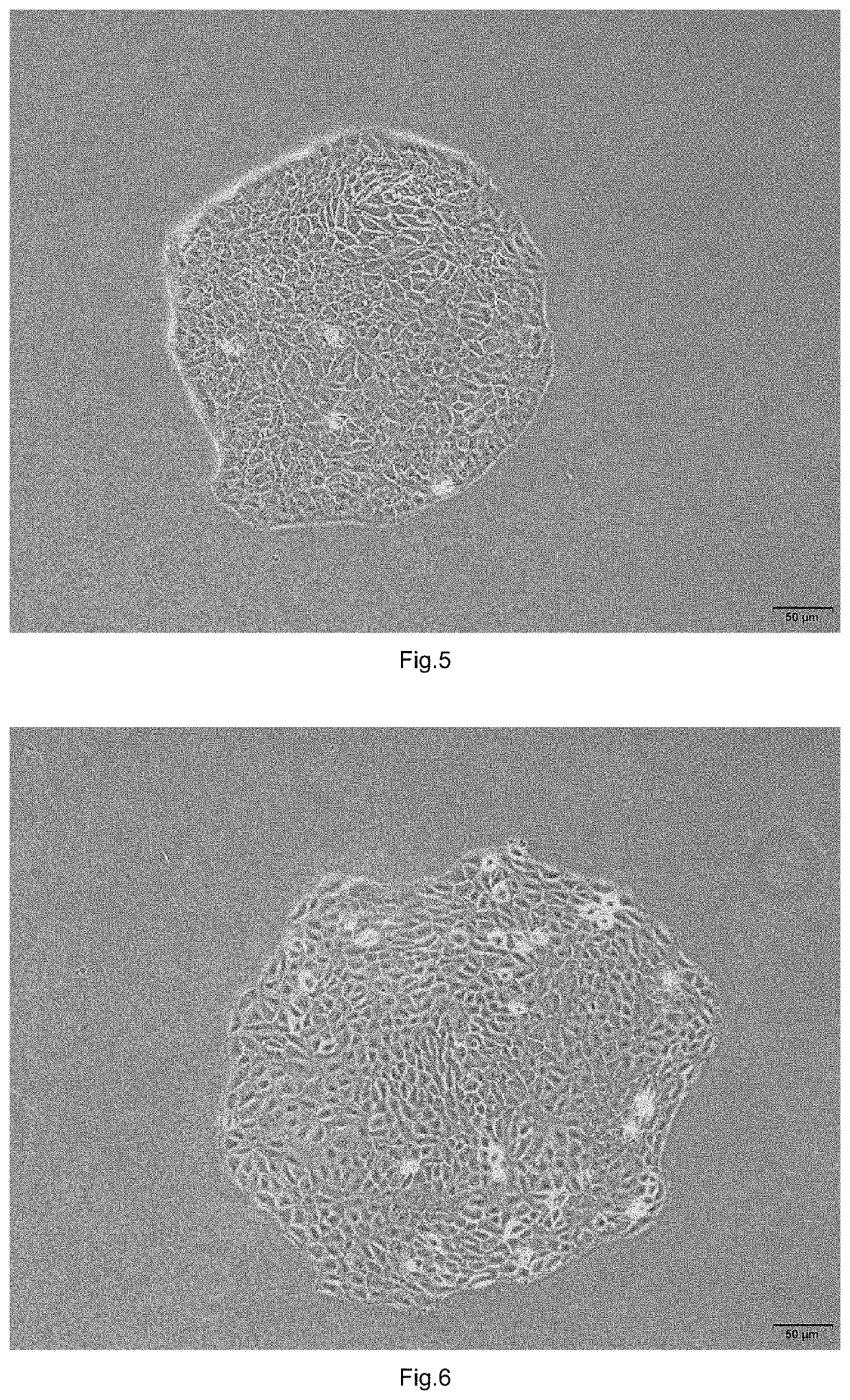A Cell Model For In Vitro Evaluation Of Compound-Induced Skin Sensitization And A Constructing Method Therefor
a cell model and sensitization technology, applied in the field of genetic engineering, can solve the problem of not being able to reflect real-time reporter gene expression, and achieve the effect of effectively distinguishing sensitizing compounds and studying sensitization of compounds
- Summary
- Abstract
- Description
- Claims
- Application Information
AI Technical Summary
Benefits of technology
Problems solved by technology
Method used
Image
Examples
example 1
[0047]In the present invention, a method for constructing a cell model where a reporter gene is targetedly knocked into a HMOX1 gene mediated by CRISPR / CAS9 used for non-diagnostic or non-treating purpose comprises the following steps:
[0048]1. Target-site-specific sgRNA for HMOX1 gene was designed, its expression vector was constructed, and its target cleavage efficiency was detected.
[0049]Specific sgRNA near the stop codon of HMOX1 gene (NCBI accession number: NG_023030 HMOX1) was designed, and off-target analysis was performed to screen three sgRNAs with good specificity and low possibility of off-target. The results are shown in Table 1.
TABLE 1Sequence of the specific sgRNAGenomenamesgRNA sequence (5′-3′)positionsgRNA-1TTAACAGGTGGGCGTGCATCAGGExon 5sgRNA-10GGTCCTTACACTCAGCTTTCTGGExon 5sgRNA-13GCTTTATGCCATGTGAATGCAGGExon 5
[0050]U6 promoter was used to express the sgRNA, and the designed sgRNA sequence was used to synthesize an Oligo to construct a sgRNA expression vector pU6-sgRNA....
PUM
 Login to View More
Login to View More Abstract
Description
Claims
Application Information
 Login to View More
Login to View More - R&D
- Intellectual Property
- Life Sciences
- Materials
- Tech Scout
- Unparalleled Data Quality
- Higher Quality Content
- 60% Fewer Hallucinations
Browse by: Latest US Patents, China's latest patents, Technical Efficacy Thesaurus, Application Domain, Technology Topic, Popular Technical Reports.
© 2025 PatSnap. All rights reserved.Legal|Privacy policy|Modern Slavery Act Transparency Statement|Sitemap|About US| Contact US: help@patsnap.com



